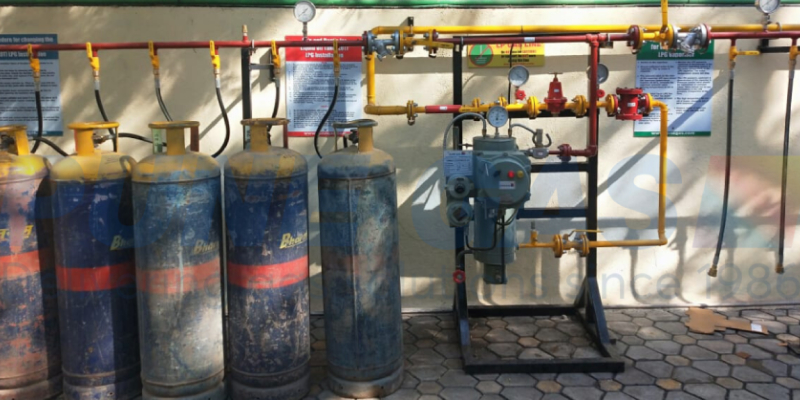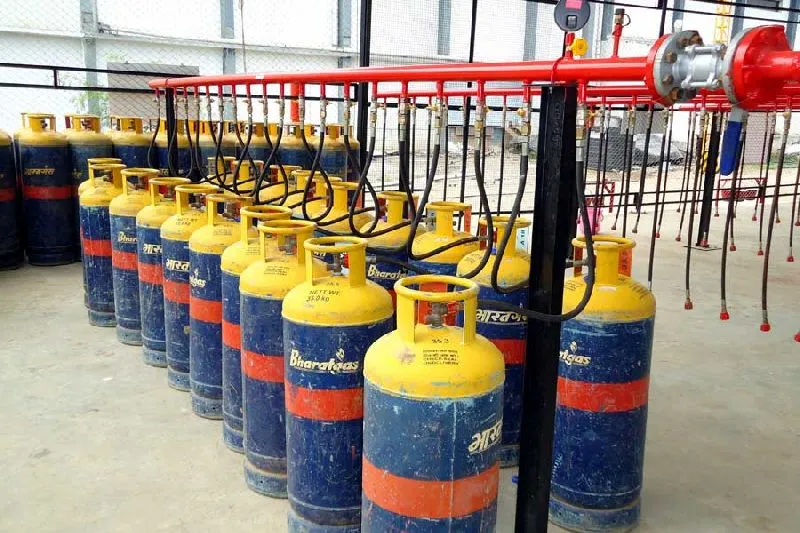Getting to Know Gas Bank: The Distribution of Liquid Petroleum Gas (LPG) in the Future

In a time when demand is high for renewable energy sources, LPG has become a popular choice for heating and cooking in homes. A practical and convenient solution has emerged as a result of demand for LPG: Gas Reserves These facilities provide a centralized system that can serve large communities and are crucial in the storage and distribution of LPG. This blog discusses related terms like LPG gas bank near me, change bank account for gas subsidy, and more, as well as what gas banks are, how they operate, and how to locate one in your area.
What does a gas bank do?
In essence, a gas bank is a centralized LPG storage facility. A gas bank provides gas to multiple homes or commercial establishments from a single source, as opposed to individual LPG cylinders for each household. Apartment complexes, gated communities, and industries with high LPG consumption make extensive use of this system.
A gas bank basically gets rid of the need for individual cylinders in homes, making the distribution process easier and ensuring a consistent supply of gas. It provides LPG to both residential and commercial customers, ensuring that it is readily available when and where it is needed.
How is a Gas Bank Operational?
The infrastructure of gas banks is well-planned. They typically consist of a substantial underground or above-ground storage facility for bulk LPG. A system of pipes connects these tanks to individual homes or industrial facilities.
Metered connections deliver the gas to individual homes or businesses after it has been stored. This framework guarantees that the inventory is controlled, with every family or business paying just for the gas they use, like how power or water is charged.
Gas banks eliminate the hassle of frequently replacing cylinders in residential settings and guarantee an uninterrupted, dependable gas supply in industrial settings.
Benefits of Gas Banks
Gas banks offer a number of benefits that make them a popular choice for large-scale LPG distribution:
Convenience: Users don’t have to worry about refilling cylinders with gas banks. The cooking or industrial process is not disrupted by the continuous supply provided by pipelines.
Cost-effective: When compared to purchasing individual cylinders, gas banks offer a centralized gas supply at lower prices frequently. The system is more cost-effective for households or businesses with varying gas requirements because users pay according to consumption.
Safety: If they aren’t handled properly, LPG cylinders can cause accidents. Gas banks are constructed with stringent safety measures to reduce the likelihood of leaks or accidents.
Eco-friendly: The transportation and handling of individual LPG cylinders is reduced by centralized gas distribution, thereby reducing carbon emissions and the environmental impact of gas consumption.
Finding a Gas Bank Near Me
The expanding availability of modern gas bank systems is one of their primary conveniences. Finding an LPG gas bank close to me has become easier as a result of the growing number of industries, housing societies, and residential complexes that rely on gas banks.
There are several options available to you if you want to locate a gas station close to me:
Web searches: Locate a gas station in your area by searching on search engines or specific websites for LPG companies. You can find listings and options for gas banks near you by simply searching “LPG gas bank near me” or “gas bank near me.”
Suppliers of LPG: Major LPG providers like Bharat Gas, HP Gas, and Indane frequently include listings of gas banks with the services they provide. To find a gas bank, you can visit their websites or contact their customer service.
Housing societies and local communities: There is a good chance that the large apartment complex or gated community where you live already has a gas bank. To inquire about gas bank services or upcoming installations, contact the management of your society.
Installing LPG Gas Bank Systems in Residential Complexes
If your residential complex does not already have a gas bank, you might want to consider suggesting that your housing association install one. LPG gas banks are easy to set up and offer a secure, streamlined method of distributing gas to large communities.
Typically, the following steps are required to set up a gas bank:
Study of Possibilities: A qualified team will carry out a feasibility study to ascertain the appropriate storage capacity and comprehend the community’s requirements for LPG.
Design and Setting Up: The gas bank system’s design is created after the feasibility has been determined. This includes putting meters in individual homes and laying pipelines. Additionally, leak detectors and pressure regulators are included as safety measures.
Checks for safety and regular maintenance: The LPG provider maintains the gas bank following installation, ensuring that safety regulations are adhered to and that the system runs smoothly.
Gas banks provide long-term convenience, security, and cost savings for large housing societies.
Changing Your Bank Account to Receive a Gas Subsidy
In order to assist households with managing the cost of LPG, governments in many nations provide gas subsidies. The subsidy is frequently deposited directly into the user’s bank account. For the purpose of receiving this subsidy, you will need to link your bank account if you are purchasing individual cylinders or using an LPG gas bank.
Follow these steps if you’ve recently changed your bank account or want to update your gas subsidy account information:
Visit the website of your gas supplier: Users can update their bank account information online with most LPG providers. Navigate to the section titled “Subsidy or Bank Account Update” on the official website of the supplier.
Include Relevant Information: Complete the required fields, including your brand-new bank account number and IFSC code. Documents such as your Aadhaar card or another form of identification may also be required.
Speak with your supplier: You can manually update your bank account for the subsidy by contacting your local gas distributor if updates via the internet are unavailable. In order to guarantee that your LPG subsidy is transferred correctly, provide the information and documents required.
Mobile apps: Additionally, many gas providers offer mobile applications that make it simple to update your bank information in order to qualify for the gas subsidy.
After changing your bank account, you can make sure that your gas subsidy goes to the right account by following these steps.
Conclusion
Gas banks are a cost-effective and dependable option for supplying large residential complexes, housing societies, and businesses with gas as the demand for LPG continues to rise. Gas banks are quickly becoming the preferred option for contemporary communities due to the convenience of a continuous supply, safety features, and the capability to pay based on consumption.
Thanks to the growing number of gas banks and online resources that make it easy to find them, finding a gas bank near me has never been easier. In addition, if you are receiving a gas subsidy, you should ensure that your bank account information is current. Gas banks make it simple to distribute LPG, whether you want to set up an LPG gas bank near me or update your bank account for gas subsidies.
Centralized gas banks represent a step toward sustainable, safe, and convenient living and the future of LPG distribution.
For more information, visit our homepage!


